Multi-Tenant Commercial Electrical Systems - Property Manager Guide
Power Supply to Property
Your properties are typically supplied with power by one of the two following methods. These diagrams show the basic flow of how power is transmitted to your property, and the typical magnitude of responsibility associated with each.
Fig. 1: Overhead Transformers Method
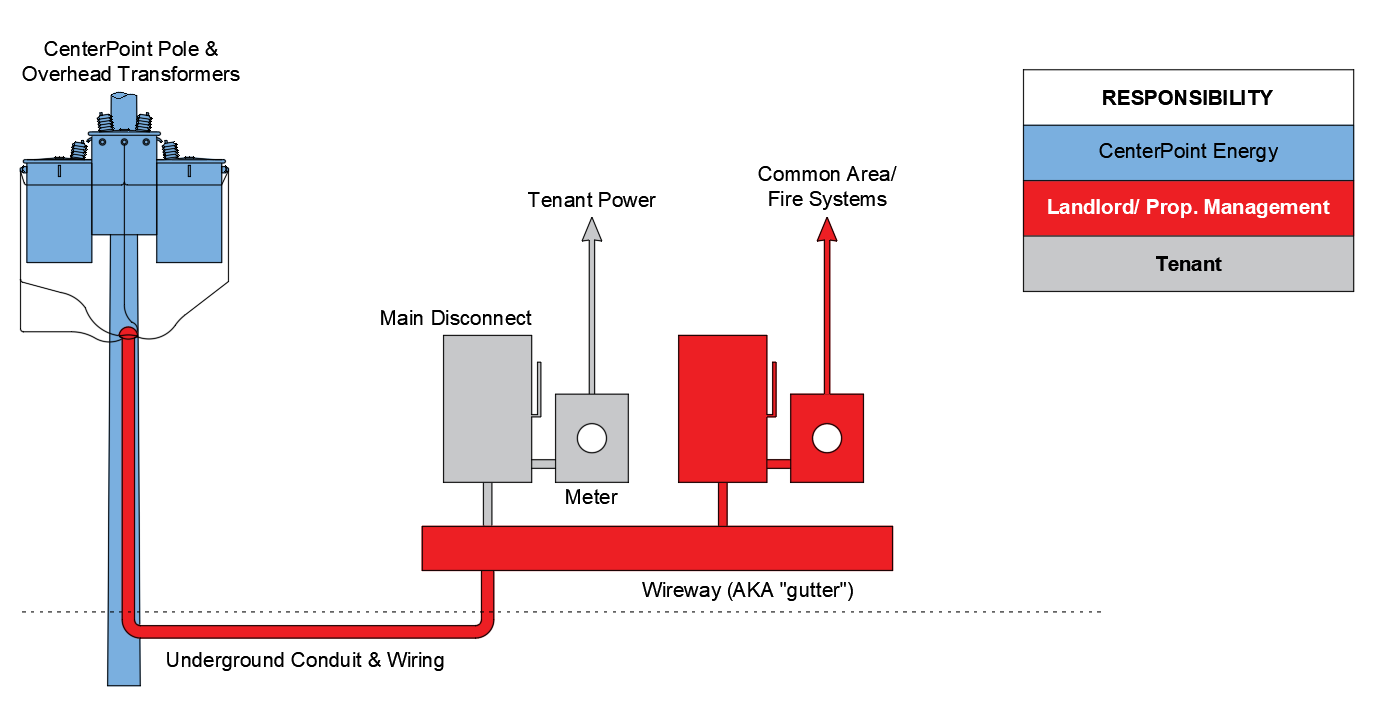
Fig. 2: Pad-Mounted Transformer Method
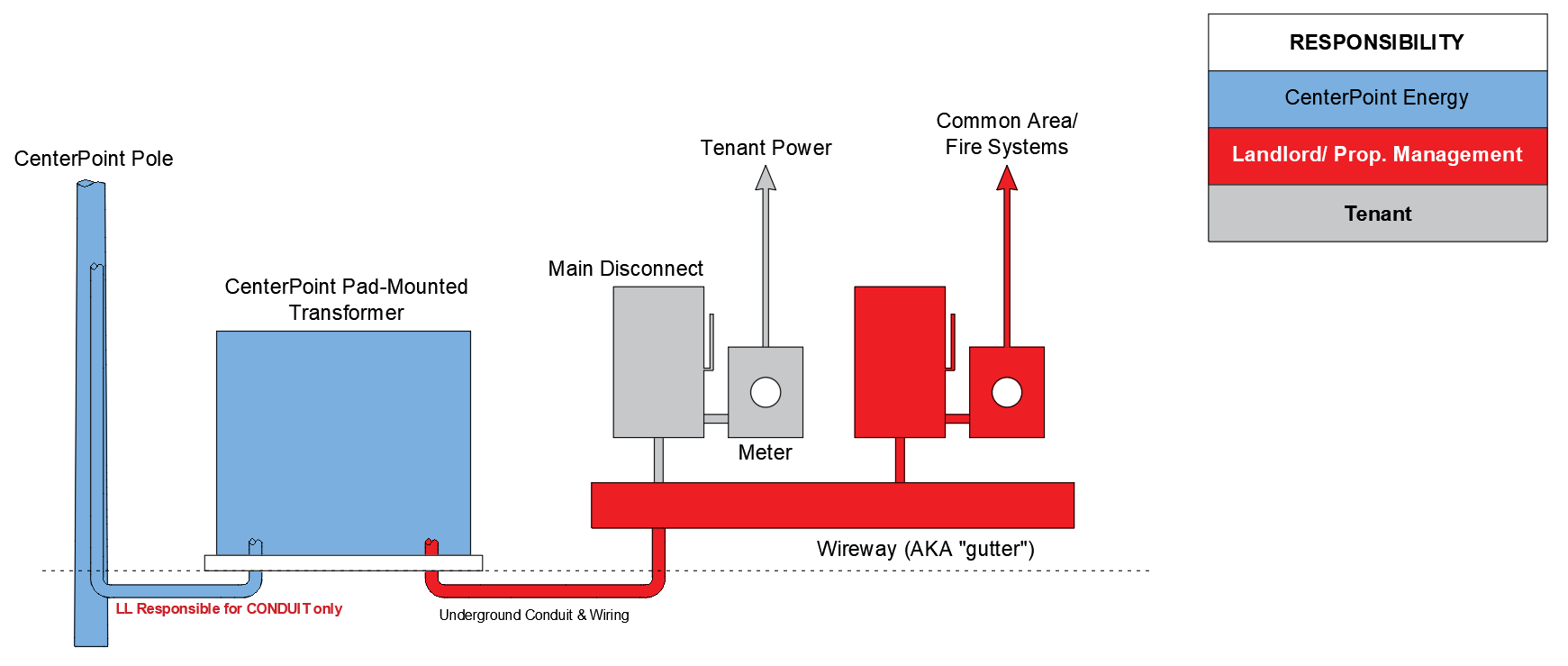
Note, these PARTICULAR portions of the power supply systems are NOT property management or owner responsibility. These transformers and the power to them are the responsibility of the utility power company.
Here's what this stuff looks like in the real world.
Overhead Transformer Bank

Underground-fed Pad-Mount Transformer

Once power is on the property via CenterPoint transformer, it is distributed to the various tenant spaces and common areas via service wireway (AKA “gutter”) from which their respective meters and main disconnects are tapped:
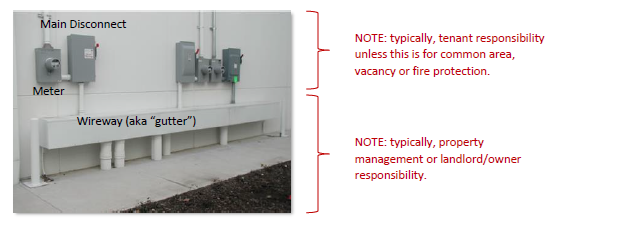
From the service wireway, the power is then distributed to the tenant space electrical panels:
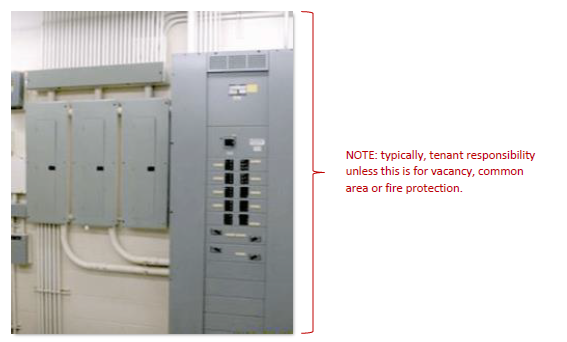
Common Power Failures
CenterPoint Issues
If you ever lose power at your property, check your CenterPoint Outage Tracker first. If you don’t see your outage on the tracker, call it in to CPE, hang up and then call your electrician.
Bookmark the tracker:
https://www.centerpointenergy.com/en-us/residential/services/electric-utility/outage-center?sa=ho

CenterPoint Fuses Blown/ CenterPoint Transformers Fails
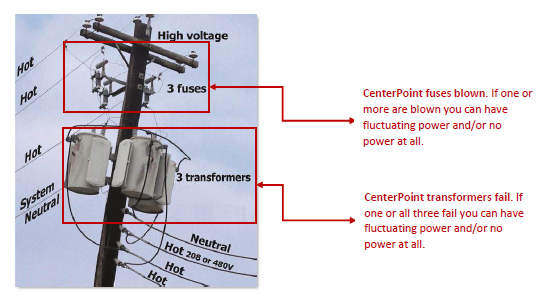
CenterPoint Fuses
These (3) cigar-shaped objects are the actual CPE fuses. If one is “blown,” it will be seen visibly hanging upside down and not seated in its fuse holder as properly depicted in this image.

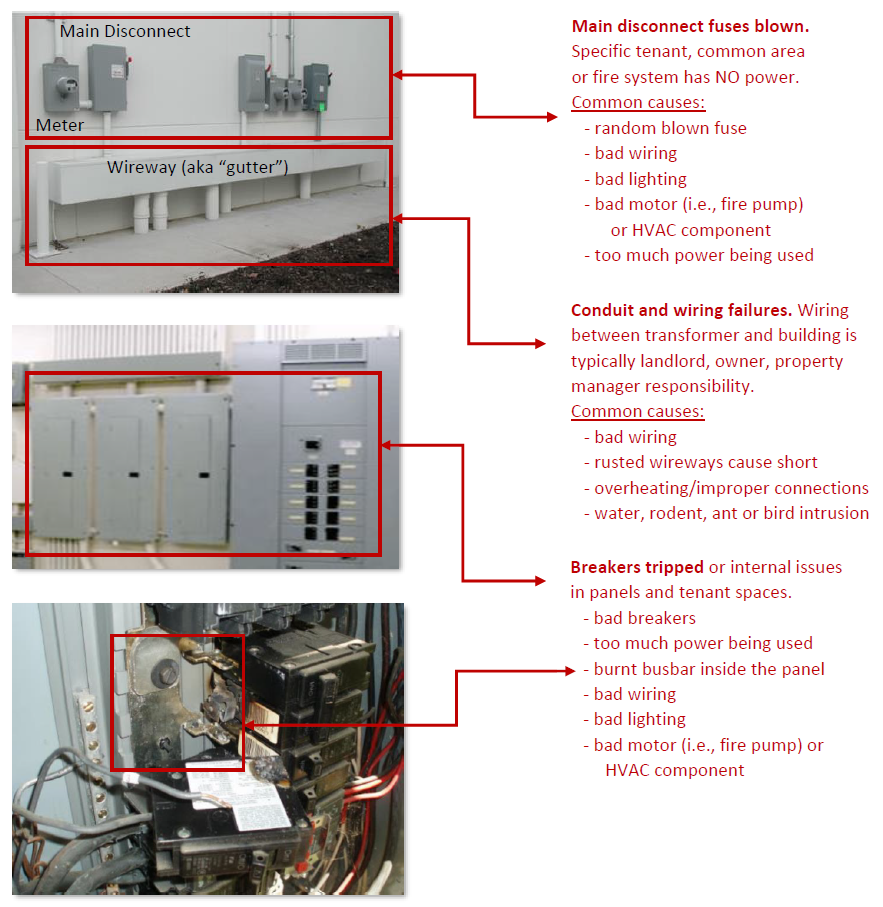
Handling Unplanned ("Surprise!") Power Outages

How to Get Power Turned On
Getting Power On at 1st Gen Space
1. Building plans are submitted by contractor and approved by City or County
2. Contractor purchases permit from City or County
3. Owner/landlord or tenant sets up account with Power Provider
4. Power provider assigns ESID# to the addresses new meter location
5. Contractor requests final inspection by City or County
6. City or County releases their permit approval to CenterPoint
7. Owner/landlord requests power provider release order to CenterPoint
8. CenterPoint inspects the work and assigns connection teams
9. CenterPoint connects power to the 1st Gen space
10. Power Provider activates account and metering
Getting Power On at 2nd Gen Space
(Assuming no substantial space modifications) If there are space modifications, treat this as a 1st Gen Space.
1. Tenant sets up account with power provider
2. Power provider assigns ESID# to the address
3. Owner/landlord request power provider release order to CenterPoint
4. CenterPoint connects power to the 1st Gen space
5. Power provider activates account and metering
Note: Some smaller cities have different protocols, wherein you have to obtain a city permit prior to simply “turning on” a 2nd gen space. In most City of Houston or Harris County circumstances, the procedures above are accurate.
Electrical Upkeep Pro-Tips
1. Permitting
Make sure tenants are legally permitting and performing work within your building. This perpetuates the value of the landlord’s investment as well as ensures safety for the persons utilizing the facilities. For example, if a tenant adds a new circuit for something as simple as a Soda machine, that work is required to be permitted and inspected by the local city inspections dept.
2. Mindset
In general, fix the small stuff before it becomes a large problem. Addressing small issues as they arise, is far less expensive than letting them grow into larger issues.
3. Due Diligence
Keep accurate and current due diligence inspection reports for your core Mechanical HVAC, Electrical and Plumbing systems. These periodic checks and the subsequent documentation derived as well as the corrective actions taken from those visits ensures asset integrity.
4. Be Curious
If you don’t have power where it once was or where it should be, more than likely something is awry. With electricity in general you can have a real problem brewing if left unchecked.
5. Lighting
Exterior lighting isn’t just pretty to look at during night time. Its essential for the security of your facilities as well as attracting persons to your facilities. Likewise, interior emergency egress lighting should be well maintained as a shear matter of personnel safety. A well-documented quarterly lighting drive by inspection program with subsequent follow-up repairs keeps exterior lighting in working order and greatly reduces liability for ownership.
6. Predict and Prevent
You can predict failures at your properties by commissioning thermal infrared and code related surveys. Typically, these are recommended every 3-5 years. A properly performed thermal and code survey will determine the hot-spots that need servicing. This helps prevent not only unwanted failure, but ultimately fire.
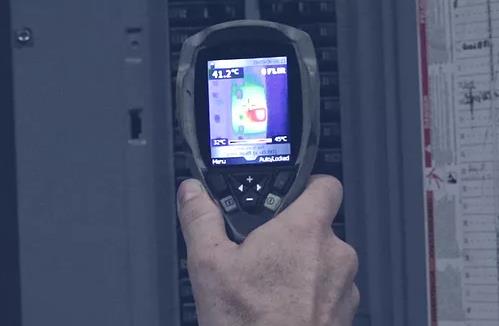
This article has been shared by Direct Service, Construction and Design to specifically accommodate our intended clientele. The intent of sharing this information is to better inform the public of these general topics, expand knowledge and safety for all and provide crucial information in regard to their MEP and building systems and/or assets. It is NOT our recommendation that any article recommendations or how-to scenarios be attempted by anyone other than a qualified or competent person.
